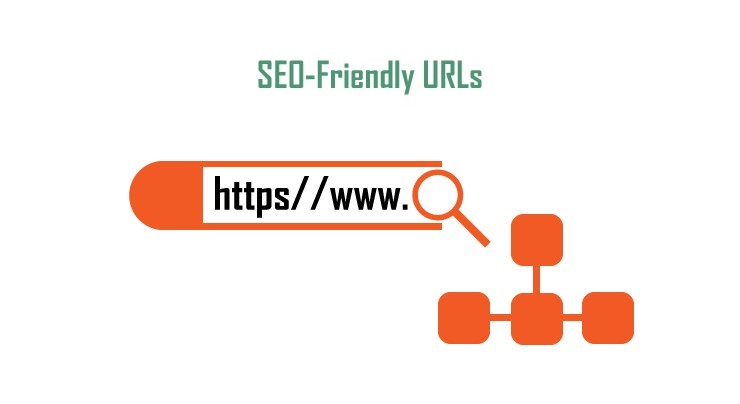Adapting your content for multiregional search patterns can be a struggle. With so many languages and potential customers to think about, it’s difficult to pinpoint the exact needs of your website. Search Engine Optimization (SEO) remains a pivotal part of everyday online content optimization. This importance seeps into the URL address optimization for each of the languages featured on your website.
Studies have shown that 17% of world’s population uses the internet on a regular basis. This is an enormous potential market which you can tap into through multilingual SEO. However, choosing the right structure and URL optimization pattern can often lead down a proverbial rabbit hole. With that in mind, let’s take a look at several tips and tricks which can prove helpful if you are in the middle of multilingual SEO and URL optimization.
Pros and cons of multilingual URLs
As with any digital content optimization method, URL modification has its pros and cons. Make sure that you are clear on what you are trying to accomplish with multilingual URL SEO before jumping into it:
Pros
- People of different language backgrounds will be able to access your content
- Increase in your website’s traffic and subsequent conversion rates
- Greater industry authority and brand loyalty with existing clients and customers
- Ability to create more varied content and localize it for multiple languages
Cons
- Modifying URLs based on geo targeting can cause mass confusion with the audience
- SEO optimization is prone to seemingly undetectable errors (a single dot can cause problems)
- Necessity for site-wide content optimization and URL modification
- High initial costs with no guarantees of good RoI
Site-wide implementation
Depending on your industry and niche, you will have to implement URL SEO optimization on your entire website. This includes every page that exists on your domain, including contact forms, articles, e-commerce storefront, etc.
The URL structure you choose should be able to support a high volume of pages. This means that you should stick to short URLs, preferably with page titles in them. It can be tricky to translate and optimize the same page into multiple languages but this is the price needed for multilingual URL optimization.
A variable domain
Domain names are the URL extensions present at the end of each hyperlink. For example, the most popular domain extension is “.com” and is widely used as a means to identify what WWW structure the site belongs to. In multilingual SEO optimization, URLs need to be adapted for each separate language. This means that you should be ready to buy new domain extensions for each of the language territories you plan to expand to.
Some of the most popular and widely-used URL domain extensions include:
- .COM
- .EU
- .NET
- .ORG
- .ASIA
- .AFRICA
- .RU
The list goes on and on. What makes domain extensions such a worthy investment is that they are logical to what they represent. For example, it’s clear what .EU stands for as opposed to .RU. This can also add a layer of URL customization to your website that the competition might not have thought about.
Choosing the right structure for your URLs can be easier if you consider the necessity for custom URL extensions. This means that you don’t have to change the complete URL of each page (if you choose not to) and simply rely on domain extension swapping. That way, you will make sure that every visitor can quickly and easily swap the language of your website and continue reading as normal.
If you do choose to completely localize your URLs, you can use The Word Point and their website localization process service. Sometimes outsourcing your content to a professional content writer isn’t such a bad idea considering the complexity of the task.
Short and sweet
Traditionally, URLs don’t have to be short in order to rank well with Google’s SEO. However, multilingual websites have to pay close attention to their URL structure and length. Shortening a URL should never be done automatically or through a third-party website.
Manual URL optimization by a site administrator or a web developer is always the right move for proper SEO optimization. The reason for this is simple – algorithms still don’t understand human logic in writing. To that end, a Spanish speaker will search for content in Spanish – not in a URL code that an algorithm came up with. Consider writing the URLs of your most important sites personally or through a multilingual copywriter.
Keyword implementation
Using keywords in digital content is a necessity. However, implementing those keywords into URLs is a conscious choice. No one will explicitly tell you that URLs need to include keywords. However, people use logic when they search for content relevant to their queries. If the keywords are present in the URLs themselves, they might consider clicking on the hyperlink to find out more.
Using a tool such as Google Keyword Planner is a great way to connect your site-wide SEO optimization with multilingual URL customization. Make sure to write your headings so that you can use them in your URLs for added SEO value. After all, choosing the right URL structure for your international audience is a matter of catering to their needs. What better way to do that than to add the actual keywords into the URLs themselves.
Maintenance and optimization
Ongoing URL optimization is a must when multilingual content is concerned. While you should never overhaul your URLs completely, it’s still a good idea to think about ongoing support. Trends change, and with them, search patters shift too. Readers are shifting from traditional keyword searches to semantic search patterns. This means that a conversational tone is apt to overthrow technical SEO writing in the next few years.
Make sure that you are ready for ongoing URL maintenance and continued monitoring of SEO trends. It is also necessary to tag your multilingual content as such through proper tags. Failing to do so will result in your content being flagged as spam or plagiarism by Google’s search engine algorithms. This is especially important if you work in a competitive industry with multiple stakeholders.
Multilingual expansion (Conclusion)
In the long run, it’s always beneficial to look into multilingual expansion. The URL optimization process isn’t without its faults, but it is a necessary step towards SEO future. Target the languages you are sure of without catering to global trends.
If you play your cards right, you will be able to retain your existing audience and attract far more than you bargained for. After all, the more people see your content, the more they will talk about it and spread the word about that one amazing site they came across. Be that website and start expanding into new regions without fear of failure.
___________
by guest blogger Margaret Reid
Margaret Reid is a freelance writer who is seeking to discover new ways for personal and professional growth. Currently she`s working in the company The Word Point and trying to improve herself in the blogging career. Margaret is an experienced and self-driven specialist who cannot imagine her life without writing.


